

Date issued:2020-09-17
The Conference of City Air Integrated Management and Low Carbon Action was successfully held in Beijing
Organized by Chinese Academy of Environmental Planning(CAEP), and co-organized sponsored by the Energy Foundation, "The Conference of City Air Integrated Management and Low Carbon Action was" and "The Annual Meeting of City Air Integrated Management and Low Carbon Action was Partnership 2020 (CAMCAP) "was successfully held in Beijing. The main purpose of this conference is to use the CAMCAP platform to summarize and sort out the work experience of atmospheric environmental management and greenhouse gas emission reduction in Chinese cities, and to exchange methods and paths of "precise pollution control, scientific pollution control, and pollution control by law", explore technical methods to achieve coordinated control of urban fine particulate matter (PM2.5) and ozone (O3), and coordinated reduction of air pollutants and greenhouse gases.
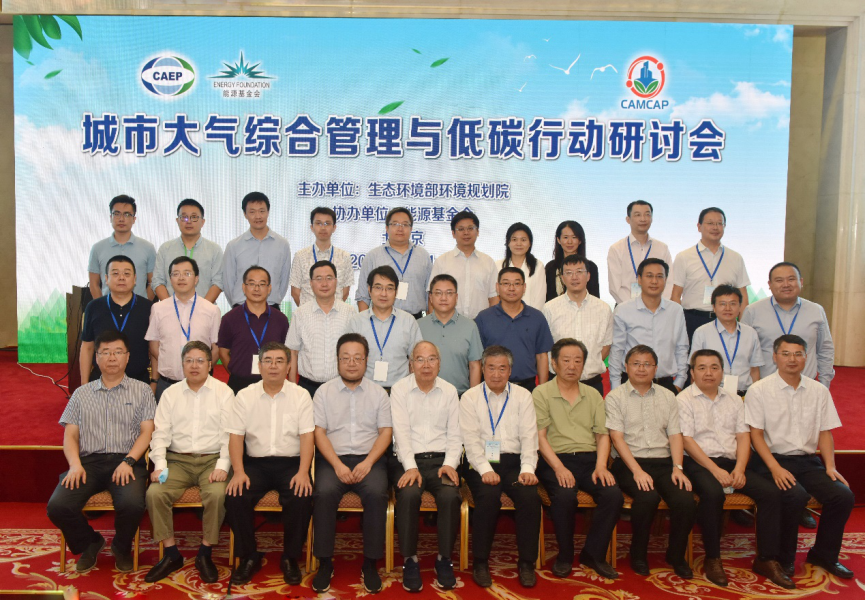
The meeting was presided by the Secretary Lu Jun from CAEP. Director Li Gao from the Department of Climate Change ,MEE and Deputy Director Wu Xianfeng of the Department of Atmospheric Environment,MEE, attended the meeting and delivered speeches. Nearly 400 representatives from from universities ,scientific research institutions and local governments participated in the meeting and conducted in-depth discussions on topics such as comprehensive urban air quality management and synergy benefits, urban low-carbon development technologies and policies, and urban management cases.
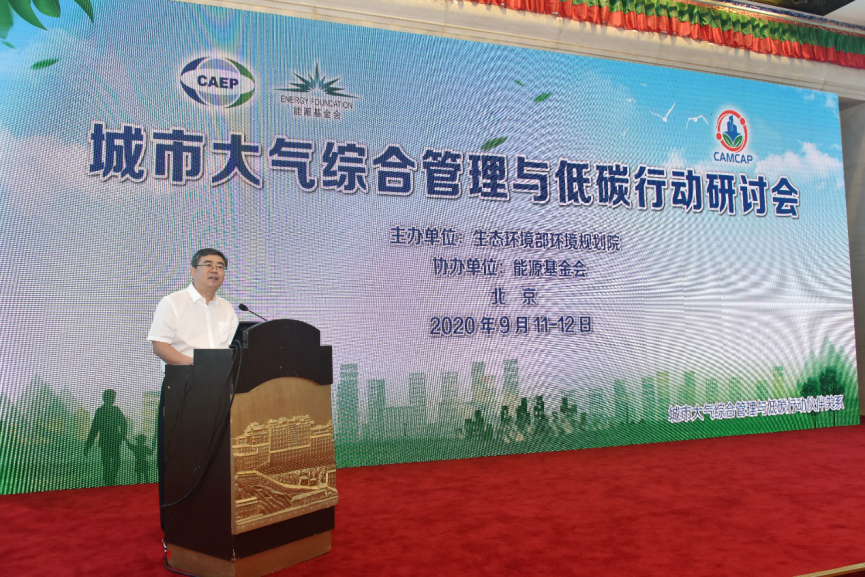
In the keynote report session, Academician Hao Jiming from Tsinghua University pointed out in a report entitled "Reflections on China's PM2.5 and O3 Coordinated Control" that there is still a long way to go to improve China's atmospheric environmental quality. He analyzed the main problems in the coordinated control of PM2.5 and O3 in China, introduced the main experience of the United States in the coordinated control of PM 2.5 and O3, and put forward the next step of strengthening the coordinated control of PM 2.5 and O 3 in China. He gave recommendations as follows, scientifically lead, actively build a modern energy system, vigorously control motor vehicle pollution emissions, promote technological progress and mechanism innovation in the petrochemical industry, promote the combination of air pollution prevention and green agriculture construction, and promote continuous reduction of air pollutants through the revision of ambient air quality standards, etc.
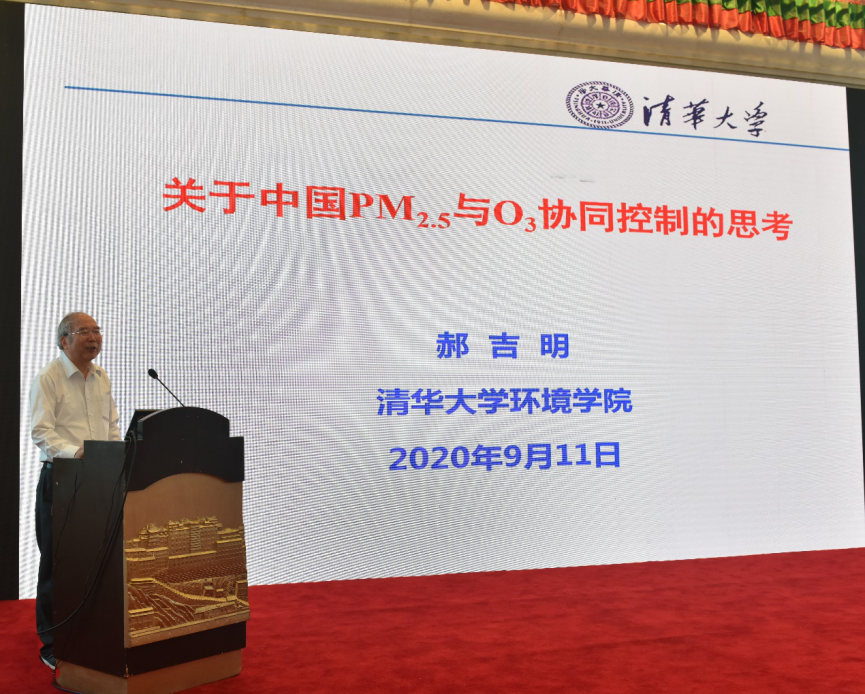
Professor He Jiankun from Tsinghua University pointed out in the keynote report entitled "Countermeasures and Paths for Low-Carbon Development in my country's Cities" that after the epidemic, the realization of "green economic recovery" has gradually become a consensus in the world, and the response to climate change will become an important issue for major powers. Professor He pointed out that the city level should follow and explore to lead the trend of energy and economic transformation, formulate and implement a long-term low-carbon development strategy in the middle of this century, build the core competitiveness of long-term low-carbon development of cities and enterprises, and promote the improvement of environmental quality and CO 2 emission reduction "Double compliance" and high-quality economic development.
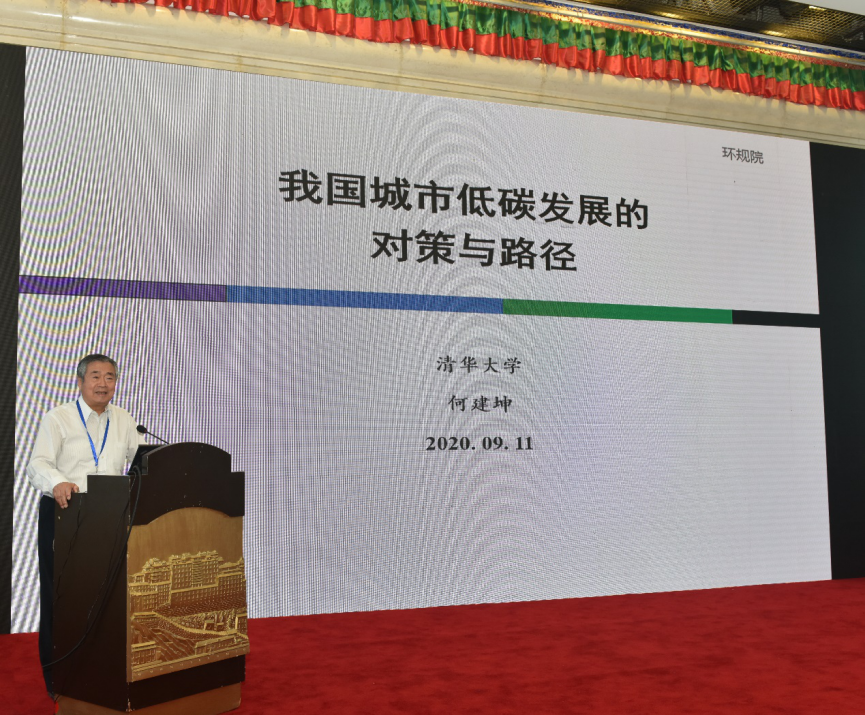
Academician Zhang Yuanhang from Peking University pointed out in a keynote report entitled "Several Basic Understandings of Atmospheric Ozone Pollution Prevention and Control" that China's atmospheric environmental situation and pollution characteristics are undergoing profound changes. Only in-depth research on the O 3 pollution process and main control factors is required. Only by guiding the reduction of NOX and VOCs can we achieve effective O 3 pollution control.In recent years, certain progress has been made in research on sources, monitoring and forecasting, precursor source inventories, program design, VOCs emission reduction technology and effectiveness evaluation technology.Beneficial explorations of O 3 pollution prevention and control have also been carried out in the Pearl River Delta and Chengdu-Chongqing regions. It is recommended to further promote the prevention and control of O 3 pollution through the national O 3 prevention and control plan, the total amount of VOCs control plan and the commercialized technology.
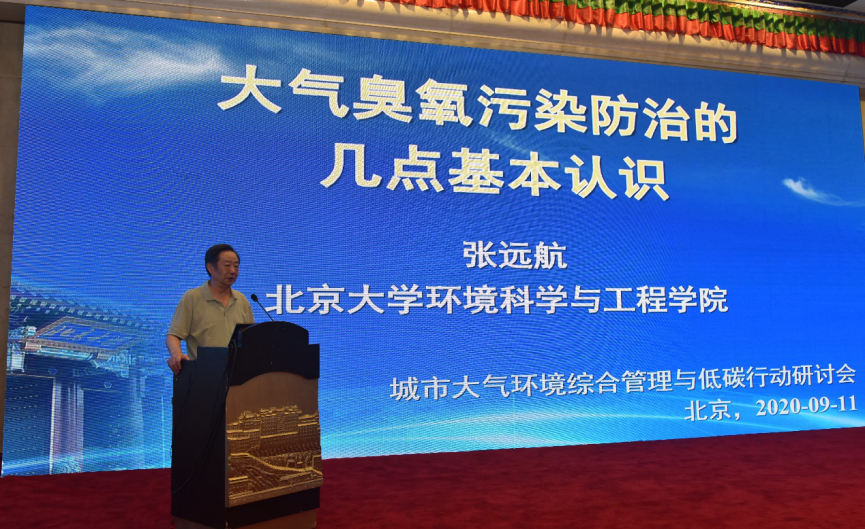
Academician He Kebin from Tsinghua University pointed out in the keynote report entitled "Air Quality Improvement and Greenhouse Gas Emission Reduction Effects of China's Clean Air Action" that the implementation of “The Action Plan of Air Pollution Prevention Control” has strongly promoted the rapid decline in our country’s air pollutant emissions and brought significant results.It has brought significant environmental improvement effects and health benefits, and at the same time, accumulated CO 2 emission reductions of 1.5 to 3 billion tons, realizing huge air quality improvement and greenhouse gas reduction synergistic benefits.In view of the future air pollution prevention and control work, Academician He put forward five suggestions. One is to consolidate and deepen effective measures and policies; the other is to expand the scope of key areas; the third is to optimize the structure and layout of energy, industry and transportation; and the fourth is to adjust air pollution in industries and pollutants. The fifth is to increase scientific and technological support and capacity building.
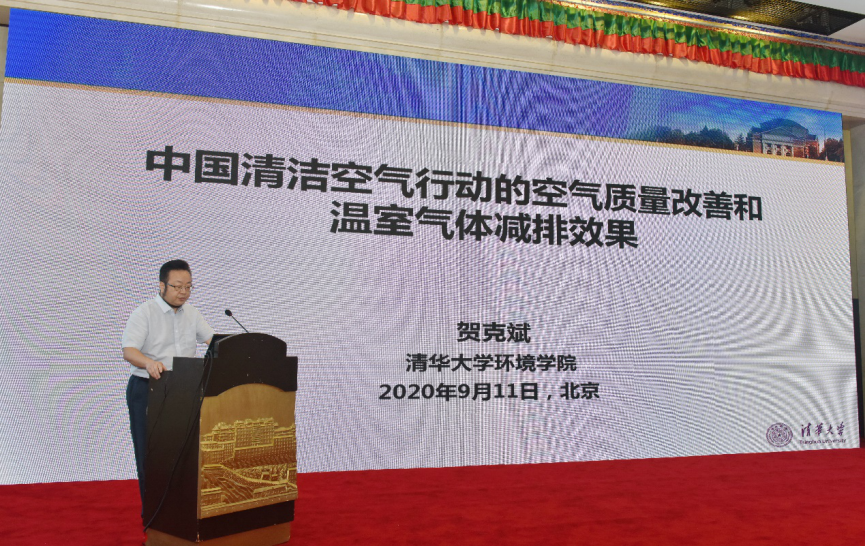
Vice president Yan Gang from CAEP pointed out in the keynote report titled "Urban Atmosphere Integrated Management and Low-Carbon Action Technology System Framework" that China’s urban air management practices are increasingly emphasizing systemicity and integrity, and carbon peaks also put forward new requirements for urban environmental management,In this context, the importance of coordinated management of conventional air pollutants and greenhouse gases has become increasingly prominent.Vice President Yan Gang further sorted out the 5 key technologies in the integrated urban atmospheric environment management system and 3 key technologies in the low-carbon city management, and explained them through the cases of Jinzhong City, Suzhou City, Guangzhou City and Yantai City The construction and application of related technical systems.
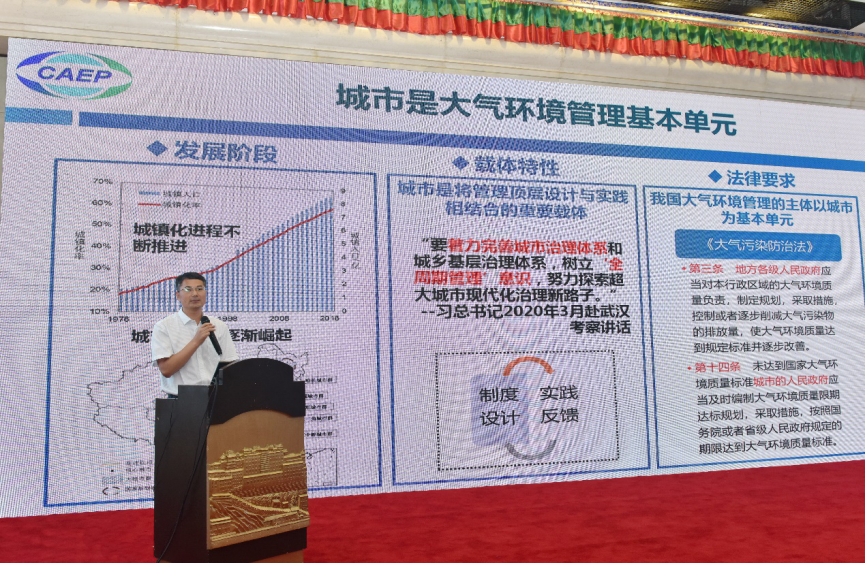
Director Xu Huaqing from the National Climate Change Strategy Research and International Cooperation Center pointed out in the keynote report entitled "Several Thoughts and Suggestions on the Coordination of Low-Carbon Development to Promote High-quality Economic Development and High-Level Protection of the Ecological Environment" that low-carbon development has become the basic approach to coordinate sustainable economic and social development.It is recommended to strengthen strategic determination, coordinate greenhouse gas emission reduction and air pollutant emission control, gradually establish a “dual control” system for carbon emission intensity and total amount, and continuously improve the national carbon emission control system to promote high-quality economic development and ecological environment.
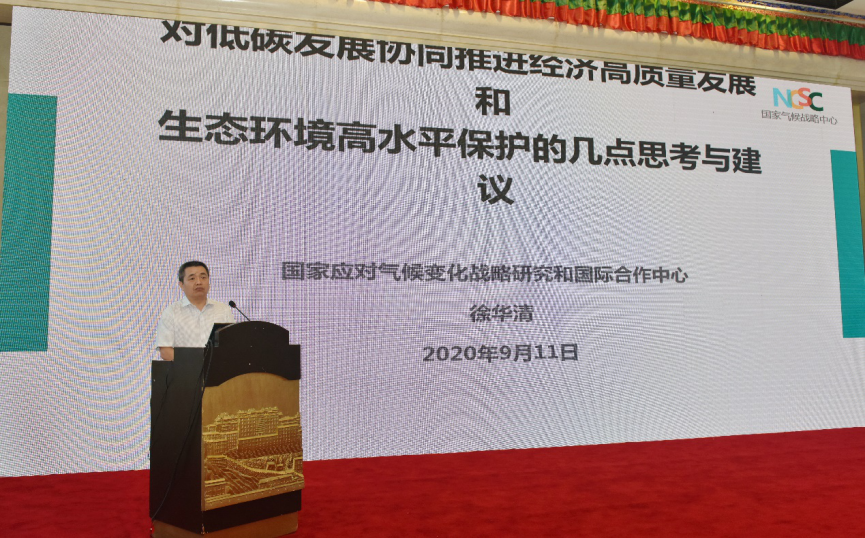
Research Fellow Chai Fahe from the Chinese Research Academy of Environmental Sciences pointed out in a keynote report entitled "Continuously promoting coordinated emission reduction of multiple pollutants with the focus on VOCs and NOX" that although China has made important progress in improving air quality, however, the atmospheric environment in the"14th Five-Year Plan" period still faces several major challenges.First, the turning point of PM2.5 prevention and control from quantitative change to qualitative change has not yet come. Second, O3 pollution has become another obstacle that affects the number of days after PM2.5. The coordinated management of PM2.5 and O3 is more urgent, and it is urgent to vigorously promote the use of VOCs. Joint emission reduction with the focus on NOx. On this basis, Chai put forward the focus of the joint reduction of VOCs and NOx from the aspects of regional targets, industry targets, emission reduction technologies, and policy management.
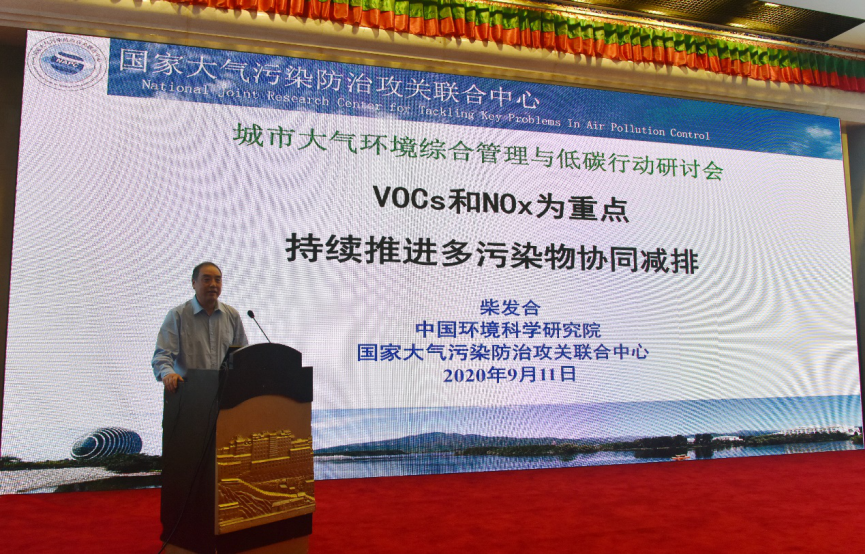
In the end ,Vice President Yan Gang from CAEP summarized the conference and thanked all speakers for their wonderful reports. After a day and a half of in-depth exchanges, representatives from all over the country expressed that they have benefited a lot. They are not only learned about the latest work requirements and related technological developments for comprehensive management of atmospheric environment and low-carbon actions, but also learned more effective practices and benefits through case exchanges in different cities.All those experience will provide important help for cities in planning to advance the work related to the "14th Five-Year Plan".
 Comments
Comments




 Home
Home

 京公网安备 11010702002483
京公网安备 11010702002483